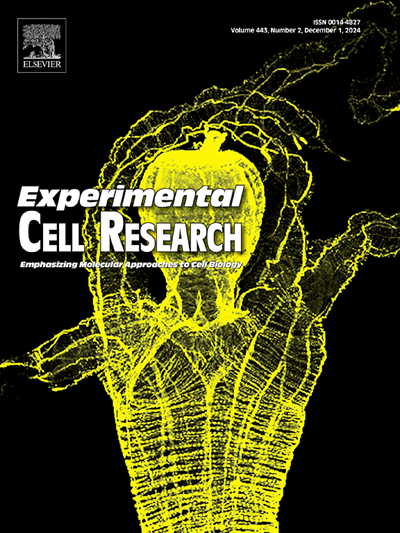去乙酰化通过恢复DUOX2在肝细胞癌中的表达来减弱CA3的生长抑制作用。
IF 3.3
3区 生物学
Q3 CELL BIOLOGY
引用次数: 0
摘要
乳酸化是肝细胞癌(HCC)的一种新发病机制。然而,潜在的机制和生物学意义仍然知之甚少。碳酸酐酶III (CA3)基因,以前被定义为SQLE的结合蛋白并参与NAFLD疾病,现在已被确定为HCC中的一种新的肿瘤抑制因子。CA3 mRNA表达与预后良好相关,且与血清乳酸水平呈负相关,而CA3蛋白表达与患者预后和血清乳酸水平无相关性,提示HCC中存在与乳酸相关的翻译后修饰。CA3过表达诱导细胞凋亡,从而通过抑制DUOX2表达降低细胞内活性氧应激(ROS)。SQLE诱导CA3蛋白在K36残基处的乳酸化水平降低,导致CA3抗癌作用丧失。总之,本研究证明了CA3在HCC中是一种新的肿瘤抑制因子,CA3的去乙酰化代表了HCC细胞逃避生长抑制因子的一种新发现的机制。本文章由计算机程序翻译,如有差异,请以英文原文为准。
Delactylation diminished the growth inhibitory role of CA3 by restoring DUOX2 expression in hepatocellular carcinoma
Lactylation is an emerging pathogenesis of hepatocellular carcinoma (HCC). However, the underlying mechanisms and biological significance remain poorly understood. The Carbonic anhydrase III (CA3) gene, previously defined as a binding protein of SQLE and involved in the NAFLD disease, has now been identified as a novel tumor suppressor in HCC. mRNA expression of CA3 is associated with a favorable prognosis and negatively correlated with serum lactate levels, whereas CA3 protein expression does not correlate with patient prognosis or serum lactate levels, suggested there has lactate-related post-translational modification of CA3 in HCC. Overexpression of CA3 induces cell apoptosis, thereby reducing intracellular reactive oxygen stress (ROS) through the inhibition of DUOX2 expression. The decreased lactylation level of CA3 protein at the K36 residues, induced by SQLE, results in the loss of the anti-cancer effect of CA3. Together, this study has demonstrated that CA3 is a novel tumor suppressor in HCC, and delactylation of CA3 represents a newly identified mechanism by which HCC cells evade growth suppressors.
求助全文
通过发布文献求助,成功后即可免费获取论文全文。
去求助
来源期刊

Experimental cell research
医学-细胞生物学
CiteScore
7.20
自引率
0.00%
发文量
295
审稿时长
30 days
期刊介绍:
Our scope includes but is not limited to areas such as: Chromosome biology; Chromatin and epigenetics; DNA repair; Gene regulation; Nuclear import-export; RNA processing; Non-coding RNAs; Organelle biology; The cytoskeleton; Intracellular trafficking; Cell-cell and cell-matrix interactions; Cell motility and migration; Cell proliferation; Cellular differentiation; Signal transduction; Programmed cell death.
 求助内容:
求助内容: 应助结果提醒方式:
应助结果提醒方式:


